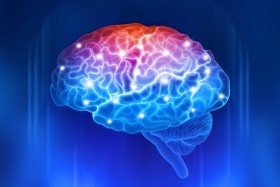Perinatal Stroke Risk Factors and Causes

When people hear about people having strokes, they often imagine them happening to older people. But in reality, strokes can happen to people of any age, including infants. In some cases, a baby might experience a stroke before even being born.
Perinatal stroke is a stroke that occurs between the 22 week mark of pregnancy and 1 month after birth. According to the Children’s Hemiplegia and Stroke Association, perinatal stroke occurs in approximately 1 in every 2,800 live births, but they believe that number may be an underestimate. Out of all types of pediatric strokes, most of them occur during the perinatal period.
There is no one single cause for perinatal strokes and it’s very common for perinatal strokes to not have any known cause. Congenital heart disease and blood clotting disorders are both common risk factors for perinatal strokes, but in many cases, they can be linked to a birth injury. Hypoxic-ischemic encephalopathy (HIE) is a type of brain injury caused by a lack of oxygen during delivery, such as if the umbilical cord becomes compressed or if there are issues with the placenta. Not only can HIE be an extremely serious injury on its own, perinatal strokes are also known to co-occur alongside cases of HIE. Traumatic head injuries can also potentially damage the arteries that carry blood to the brain.
The Children’s Hemiplegia and Stroke Association reports that 40% of infants with early stroke do not show any symptoms right away and symptoms don’t begin start to become apparent until a child begins experiencing developmental delays. A child who has experienced a perinatal stroke might favor one hand over the other or hesitate to put weight on one leg. They may also struggle with rolling over, crawling, or walking. It’s common for some types of symptoms to be overlooked because they seem so subtle. For example, some people might see their child favoring one hand over another and think it’s simply their natural hand preference.
In cases when symptoms are noticeable right away, infants can have problems like focal seizures and other neurological conditions. Some other symptoms that are more immediately noticeable can include poor muscle tone, difficulties breathing, and problems with feeding. It’s also estimated that 60% of all children who survive a stroke have permanent neurological problems as a result. Among children, pediatric strokes, including perinatal strokes, neonatal strokes, and childhood strokes, are some of the most common causes of hemiplegia, hemiparesis, and hemiplegic cerebral palsy.
If your child experienced a perinatal stroke that you believe may have been connected to a birth injury, don’t hesitate to get in touch with a birth trauma lawyer as soon as possible. These situations are deeply upsetting and an experienced lawyer will be able to answer your questions and help you figure out which steps to take next. Even if your child is a few years old, you may still have legal options, so don’t feel like it’s too late to talk to a lawyer. At Goodwin & Scieszka, we have attorneys who are experienced in handling birth trauma cases. Contact us today for help with your case.





